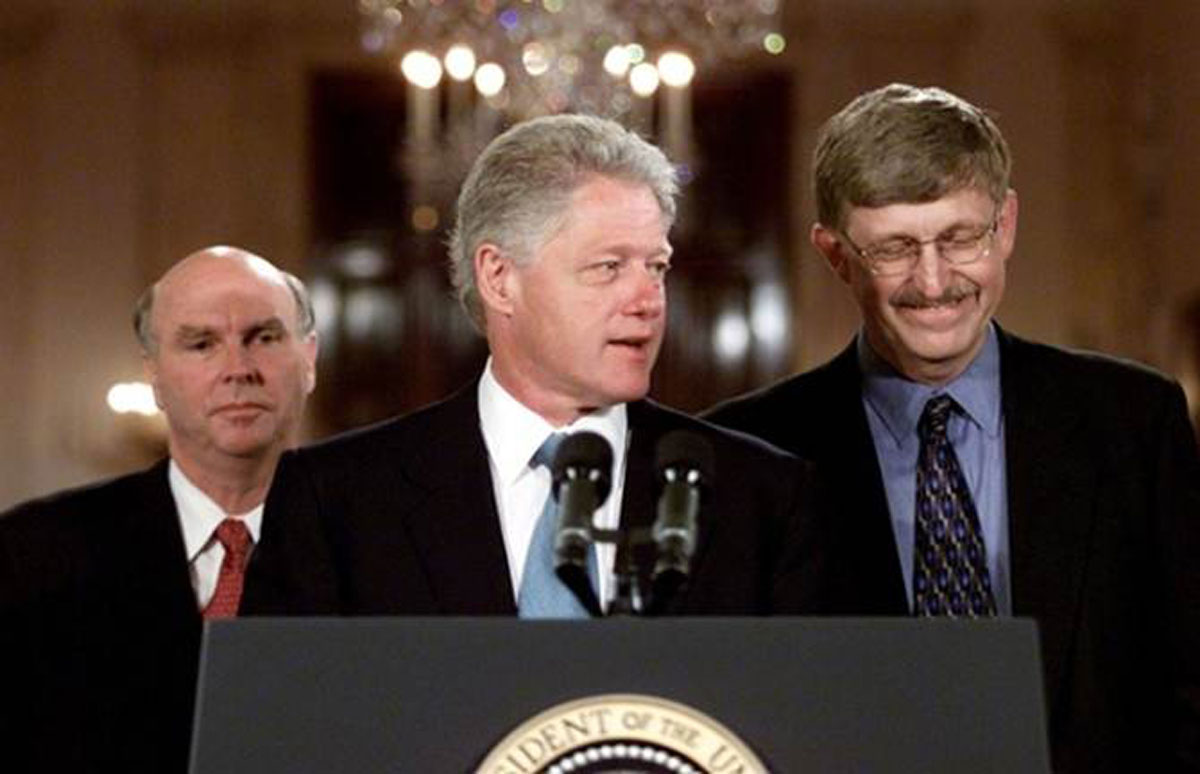Genome Project Raises Fears, Hopes
Copying the human script Originally published at WorldTwo rival groups of scientists have announced that the race to decode the human genome has ended-in a tie. J. Craig Venter, president of Celera Genomics, and Francis S. Collins, director of the National Human Genome Research Institute, joined in a White House ceremony on June 26 to announce that they’ve deciphered the human hereditary script.
The two organizations had been in competition since 1998, when Dr. Venter started a private company and announced that he would beat Dr. Collins’s largely government-funded group to the punch. What had proceeded as placid academic research turned into a hectic race.
The DNA code functions like a language based on four chemical “letters.” Together the two research organizations identified the 3 billion chemical letters that constitute the human genome (the sum of genetic material contained in every cell of the human body). Yet this is only the beginning. “Scientists have merely uncovered the text for a language we barely know how to read,” John Bloom of Biola University told WORLD.
As scientists learn to “read” the genome, they hope to develop new therapies for genetically based illnesses. Yet there are also reasonable concerns-for example, that abortion will increase as the unborn are increasingly screened for genetic defects. And as genetic engineering becomes viable, it will be hard for parents to resist the temptation to seek a competitive advantage by tweaking their children’s genes (see “Cracking the code,” April 29).
New genetic discoveries could also give a boost to the philosophy of genetic reductionism, the belief that our genes decisively shape who we are. Even while making their stunning announcement, Dr. Collins warned against “genetic determinism” and Dr. Venter spoke of his conviction that the human spirit transcends our physiology.
And not only the human spirit. The human body itself transcends what is contained in the DNA molecule. Each cell in our body has the same DNA, yet some become liver cells and others heart cells. Why? Because the genes are differentially turned on or off. “But this means that genes are being turned on or off by factors outside themselves,” argues Jon Wells, author of the forthcoming Icons of Evolution. “Control rests with something beyond the genes.”
That’s why “identical twins, with exactly the same DNA, often have different personalities, preferences, and even skills,” explains David DeWitt of Liberty University.
Finally, the deciphering of the DNA code gives fresh urgency to the question of its origin. Because of the staggering complexity of DNA, researchers have abandoned chance theories of life’s origin; instead, they are searching for some natural law to explain the rise of the first replicating molecule in a primeval soup.
Yet lawful events are regular and repeatable, which the sequence of letters in DNA is not. Had it been a repeating pattern, then mapping the genome would have been a simple task: Merely find the formula that describes the pattern and you’d solve the puzzle.
Instead DNA exhibits “specified complexity” — an irregular sequence that fits a prescribed pattern. Other examples include books, musical scores, and computer programs. In all known instances, specified complexity is produced by an intelligent agent, not by blind natural forces.
The conclusion is compelling. At the White House ceremony, even President Clinton resorted to God talk: “Today we are learning the language in which God created life.” Dr. Collins, who is an evangelical Christian, added, “We have caught the first glimpses of our instruction book, previously known only to God.” The deciphering of the code of life is making it harder than ever for scientists to insist on a naturalistic account of life’s origin.
